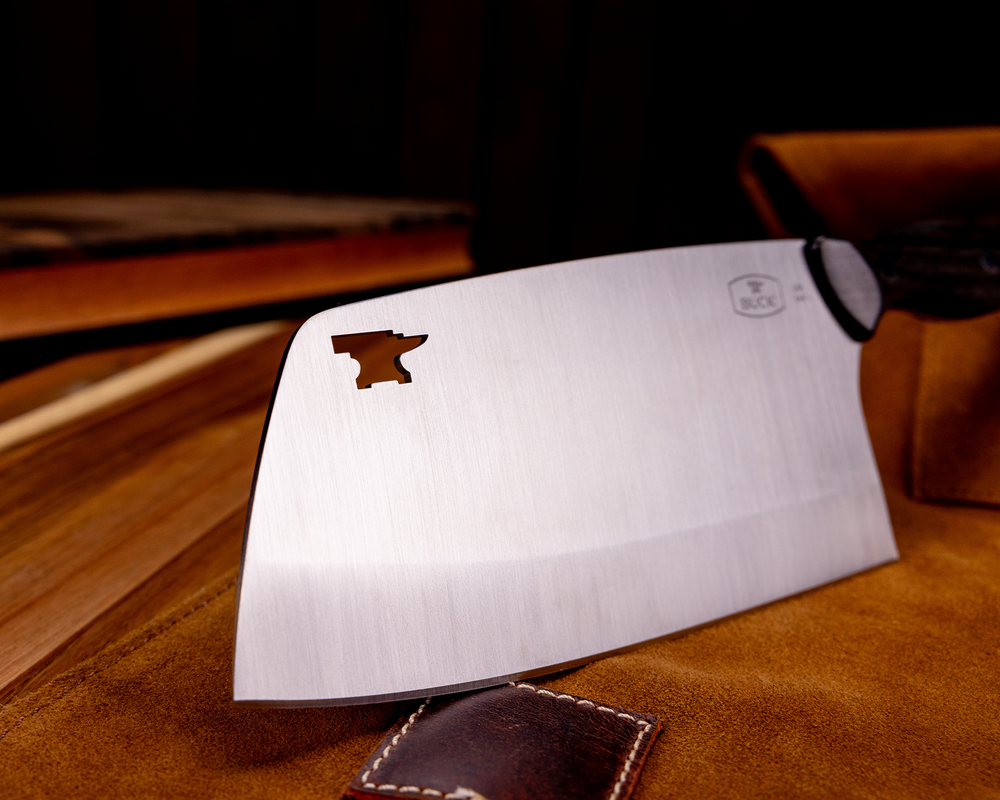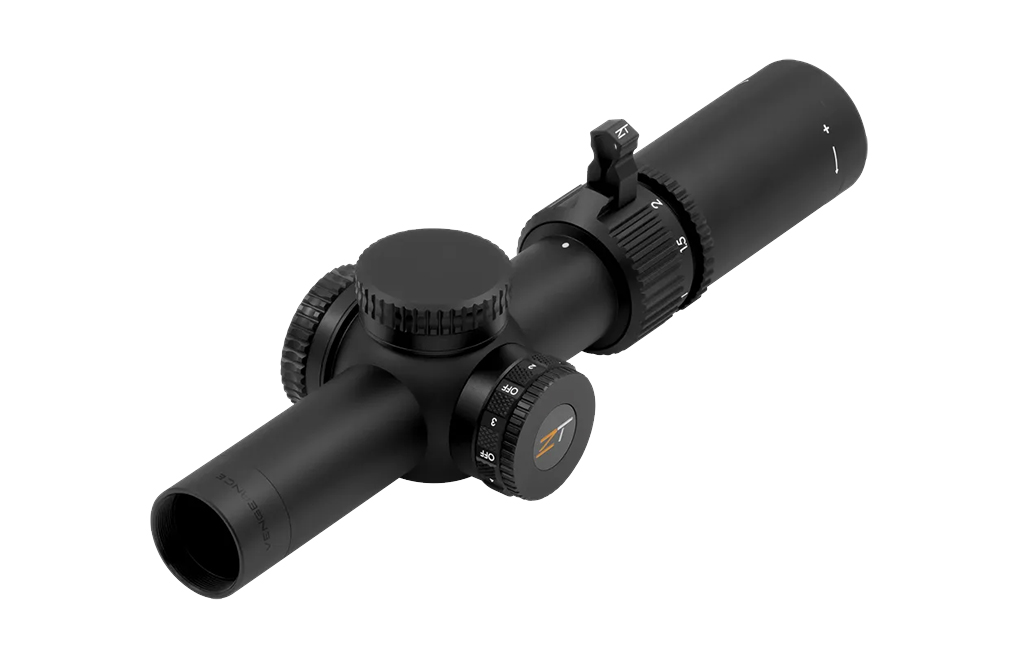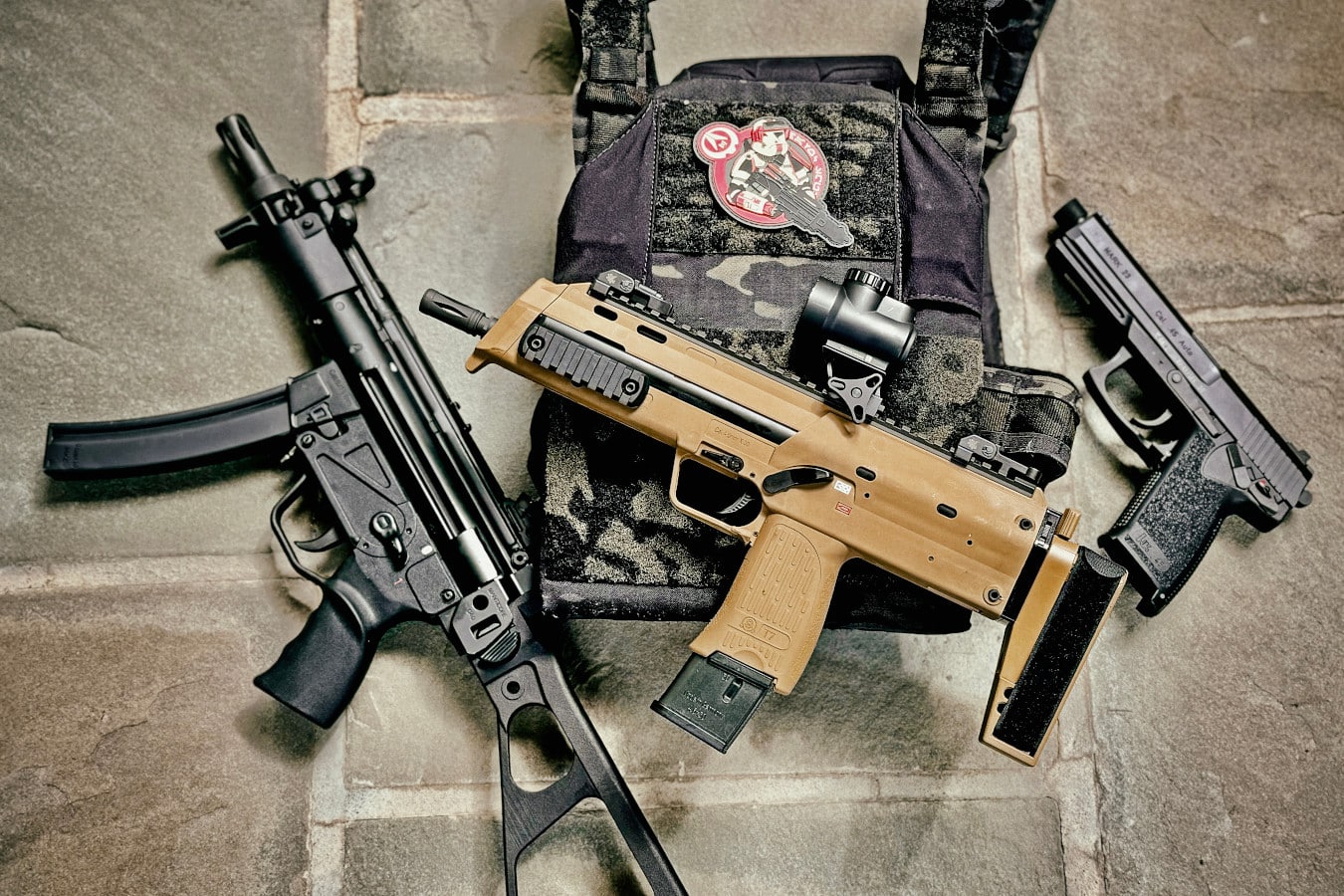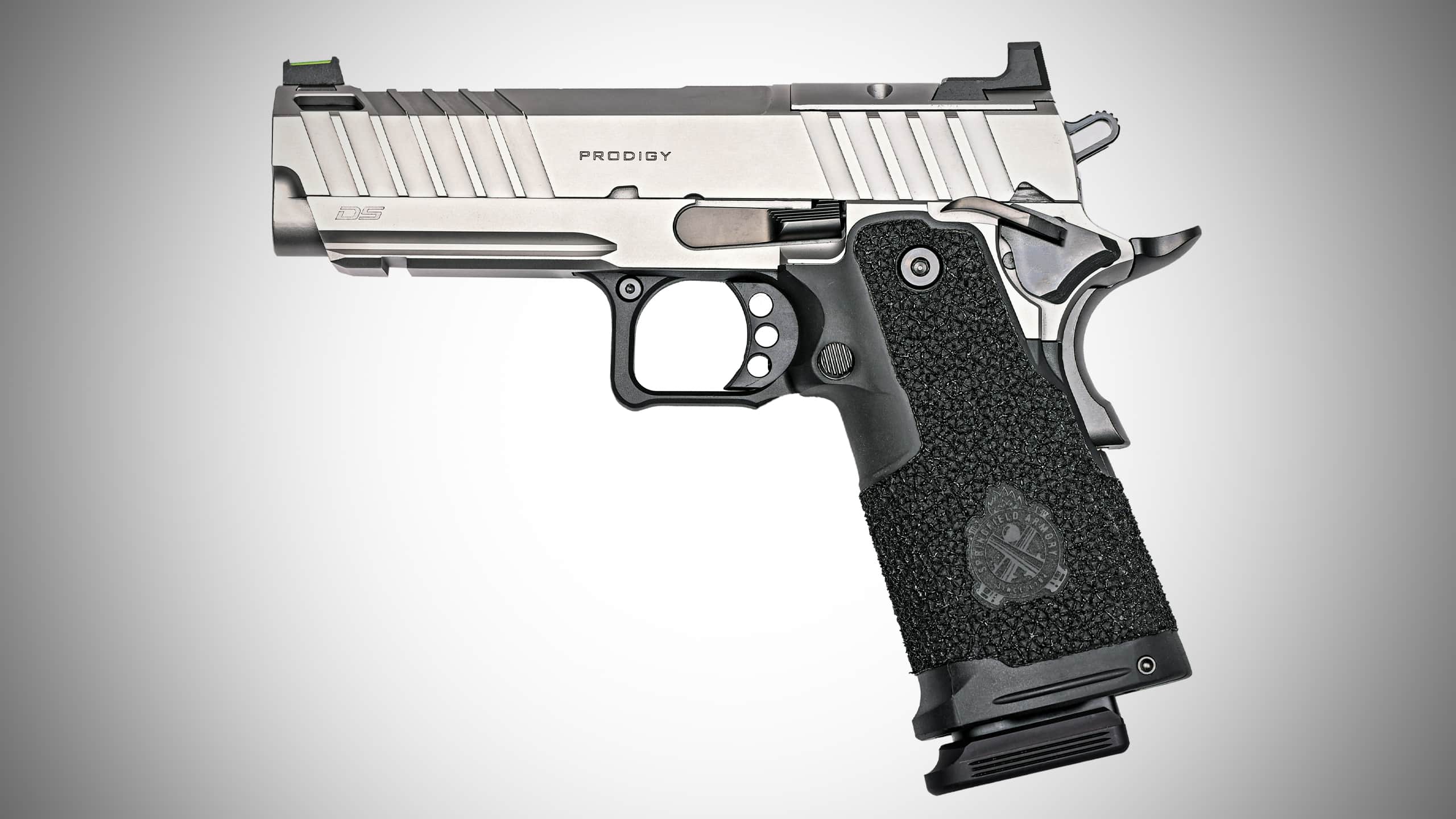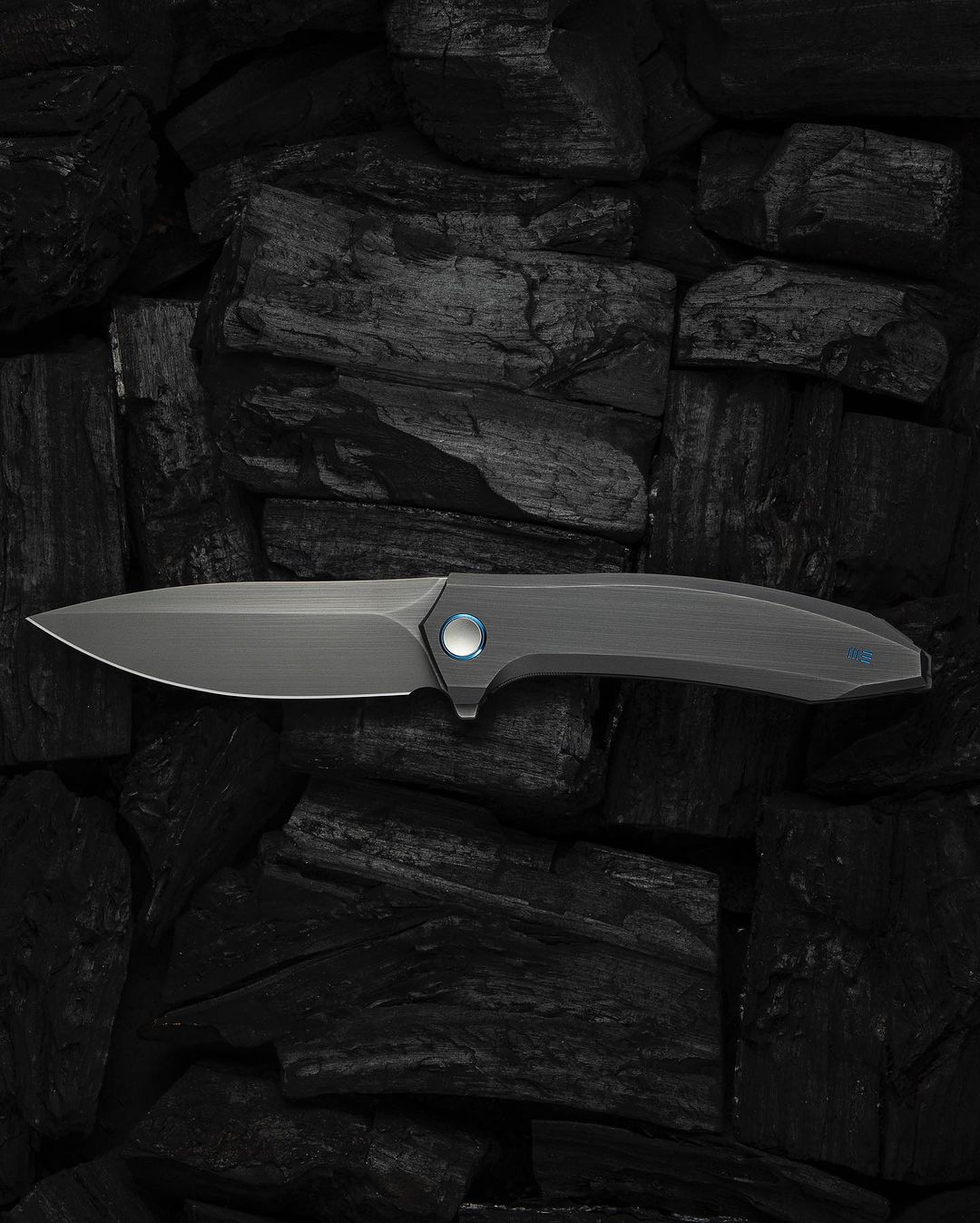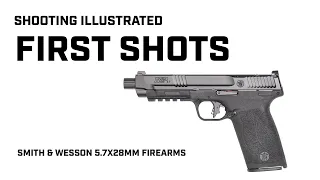A Silent SBR with Silencer Central Banish
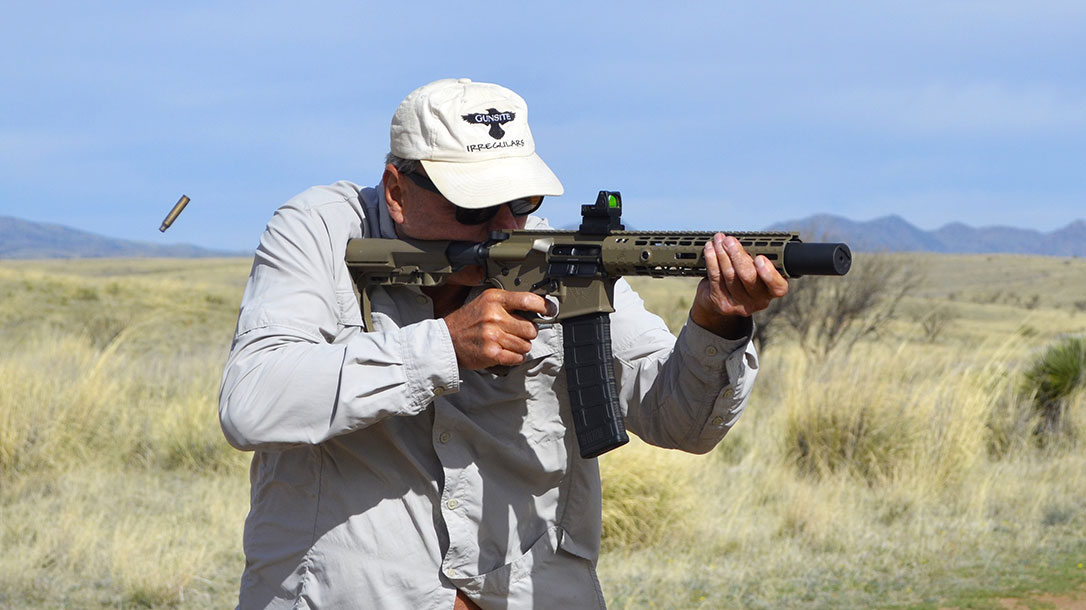
I have a house full of guns, and even though I competed for quite a few years at USPSA matches, I knew that handguns would not be my first choice should I hear someone knocking down my security door. Shotguns are a very viable home defense tool, but I wanted more capacity than they offered. For this reason, I chose the AR-15 as the platform I wanted to use based on my familiarity with it. Specifically, I opted to build a SBR (Short Barreled Rifle) for my home defense solution.
Home Defense SBR: Shorter is Better
At first, I was going to make AR pistols for my home defense guns. But after ATF waffled the first couple of times regarding pistol brace legality, I bit the bullet and registered my three Wilson Combat receivers as short-barreled rifles in 2015.
I wanted to make my house guns as short as possible so they’d be maneuverable in my hallways and doorways. They had to be compact yet able to make quick, fight-stopping hits. I set all three of the guns up identically.
I used Gun Tec free-float handguards, 7.5-inch barrels with a 3-inch flash can, and a Mission First Tactical buttstock. Likewise, I also used red dots on all the guns.
I stationed these guns where I spent most of my day at home. One is by the loveseat, where I watch TV and work on my laptop. I also placed one next to my bed and the third was out in my home gym. Wherever I was in the house, I was never far from one of these three guns.
I made a habit of taking these guns with me for every shooting session planned in the desert. Likewise, I also took them to Gunsite a few times, where I had a chance to shoot them in the shoot houses and on outdoor field courses like the Military Crest.
The flash, concussion, and noise inside the shoot houses convinced me I needed a suppressor on these short weapons. But the thought of completing reams of government paperwork prevented me from starting the process.
Silence is Golden
I had the opportunity to meet Brandon Maddox at the 2022 Athlon Outdoors Rendezvous. Maddox is the founder and owner of Silencer Central. His company has taken all of the stress and guesswork out of owning a suppressor.
The company walks you through the process of establishing a trust and filing the e-forms. Once your application has been approved, Silencer Central ships the suppressor directly to your house. Believe me, it is that simple!
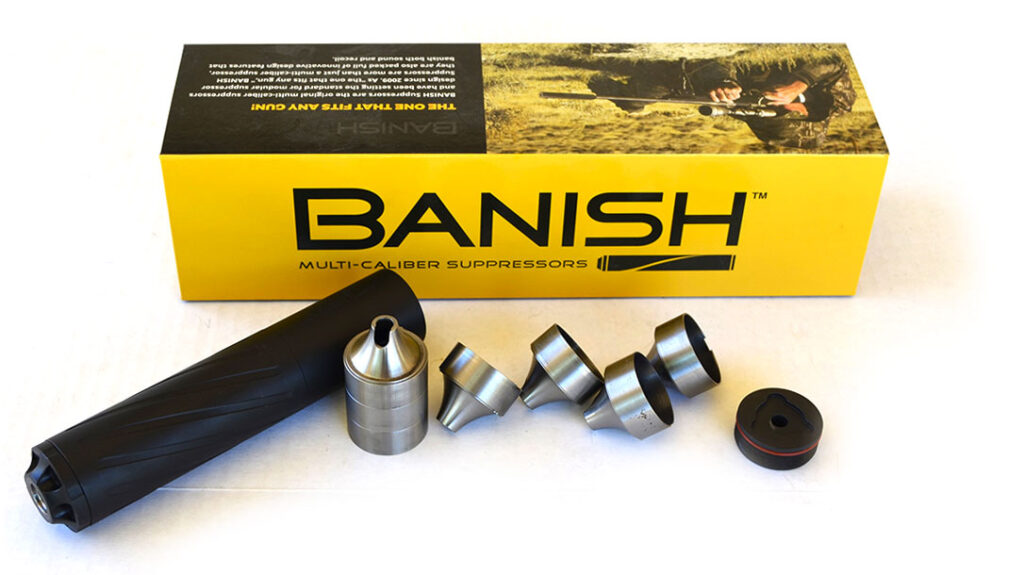
Silencer Central’s Banish is only 1 ½-inches in diameter, seven inches long, and weighs just eleven and a quarter ounces. It uses a standard ½ x 28 thread and can attach to most .223 ARs after removing the muzzle brake.
Totally machined from lightweight Titanium, the suppressor is full-auto-rated and offers a sound reduction of 34 decibels. Not only will the Banish take some of the bark out of the AR’s report, but it will also reduce recoil without decreasing the gun’s bite!
Dedicated Upper
As I indicated earlier, the length of my house gun is important to me. Shorter is better for my needs, so I decided to build a dedicated top end for my registered SBR lower. For starters, I used a 7.5-inch stainless steel barrel with a 1:9-inch twist. With the Banish attached, the length of my house gun was only increased by four inches.
I wanted my free-floating handguard to partially cover the Banish to prevent burning my hand when using the suppressor. However, many handguards have an internal diameter too small for the Banish to fit. So, I had to do some research.
Aero Precision offers the GEN 2 10.7-inch free-float handguard, which has a 1.72-inch internal diameter. It’s machined to MIL-SPEC dimensions and features M-LOK cuts, a full-length Picatinny top rail, and QD disconnect sling pockets. This handguard is perfect for my needs.
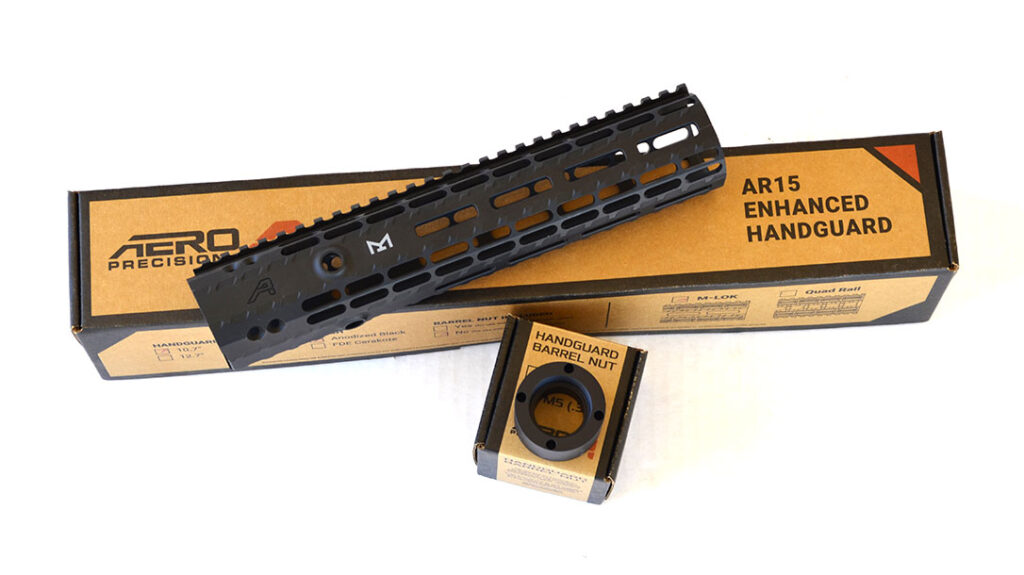
I used a low-profile gas block and carefully measured the distance from the edge to the center of its port and the distance from the barrel shoulder to the center of the gas port so that I could center the gas block precisely.
With the abbreviated barrel and the suppressor, I wanted to ensure that I could get all the gas needed for reliable operation.
Assembling my Home Defense SBR
The flat-top upper receiver came out of my parts box, and I honestly can’t remember the manufacturer. However, it does have the M4 feedramps. Additionally, I used the Aero Precision upper receiver parts set to complete the upper.
With all of my parts assembled, I did a dry fit before doing any finish work to ensure that they would work together properly.

I wanted the upper receiver and handguard to match the flat dark earth finish of my Wilson Combat lower. So, I used an aerosol can of DuraCoat® to coat the parts. DuraCoat® doesn’t require heat to prep or cure the finish, and the can has its own catalyst or hardener. This gives the user about 24 hours to use the can.
I covered the upper receiver and handguard with probably 6-7 light misting passes. After the finish had cured, the color was very close to my Wilson Combat lower, and the parts looked great!
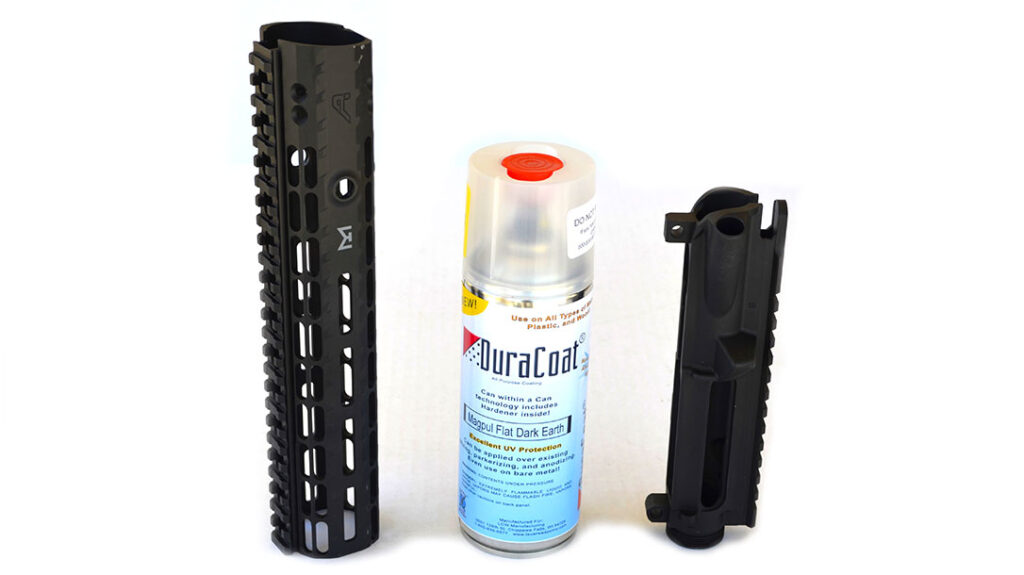
I also used this opportunity to upgrade the trigger of my house gun. Rise Armament’s RA-535 Advanced Performance Trigger (APT) is a single-stage trigger with a 3.5-pound pull and a fast firm reset with no overtravel. It comes with anti-rotation trigger pins, and my test sample registered at 3 pounds, 6 ounces.
An Innovative Bolt Carrier Group
If you’ve ever muffed a reload during a 3-gun stage by trying to insert a fully loaded mag into an AR with its bolt closed, there is a solution. And it doesn’t involve downloading the mag. It’s truly one of those ‘why didn’t I think of this’ answers to a well-known problem.
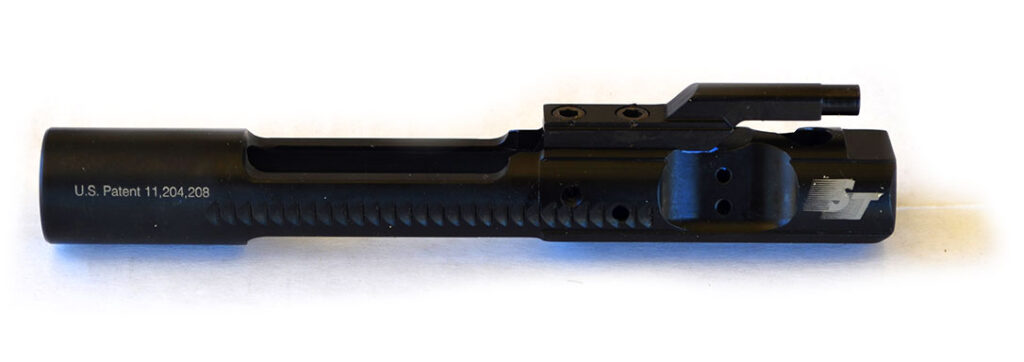
Speed Tac bolt carriers feature cuts on the underside that allow a fully loaded mag to be seated without any issues. My sample has been coated with black nitride. This not only increases the hardness of the host metal but also makes it corrosion-resistant and lubricious.
Shooting my SBR
After a successful function test of the suppressed upper in my garage bullet trap, I drove out to a secluded desert range to sight in my suppressed house gun. When I got there, I set my target out at 50 yards. Once zeroed, the gun should be within a couple of inches of the point of aim from a contact distance of 200 yards.
I switched the Trijicon RMR from my old upper to the new one and dialed it in quickly. While shooting, I noticed my empties were ejecting into a neat pile between the 2 o’clock and 3 o’clock positions about 7 feet from the gun. It was getting all the gas it needed for proper function.
Rise Armament’s RA-535 APT trigger made shooting this little gun a delight. Likewise, the RMR’s dot never wavered while I added the 3.25 pounds of pressure needed to break the shot. Using a sand-filled Caldwell Tack Driver helped stabilize the SBR for zeroing.
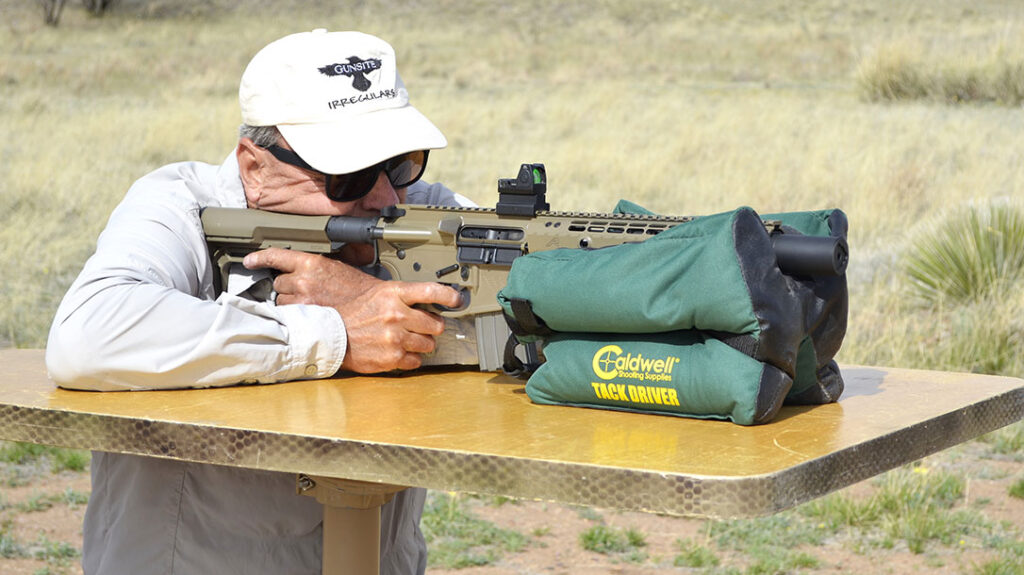
| Ammo | Velocity | Energy | Group |
| Aguila 55-grain FMJ | 1921 | 450 | 1.80” |
| Aguila 62-grain FMJ | 2072 | 591 | 1.57” |
| Black Hills 69-grain OTM Match | 2125 | 692 | 1.05” |
| Federal American Eagle 55-grain FMJ BT | 2091 | 534 | 1.36” |
| Hornady 73-grain ELD Match | 2039 | 674 | 0.83” |
| Sig Sauer 77-grain OTM Match | 1813 | 562 | 0.78” |
| Average | 1.23” |
Sig’s 77-grain Open Tip Match (OTM) rounds produced the best 5-shot group measuring just .78-inch, and I was impressed. Keep in mind this is from a carbine with a 7.5-inch barrel and a non-magnified red dot sight.
Downside to Shorties
There’s no free lunch when it comes to SBRs and their performance. I knew that the 7.5-inch barrel would adversely affect the velocity of the rounds fired through it.
For comparison’s sake, I brought along a 16-inch AR to chronograph alongside my SBR. I found that the 7.5-inch gun produced 27% less velocity, on average, shooting the same loads under the same conditions.
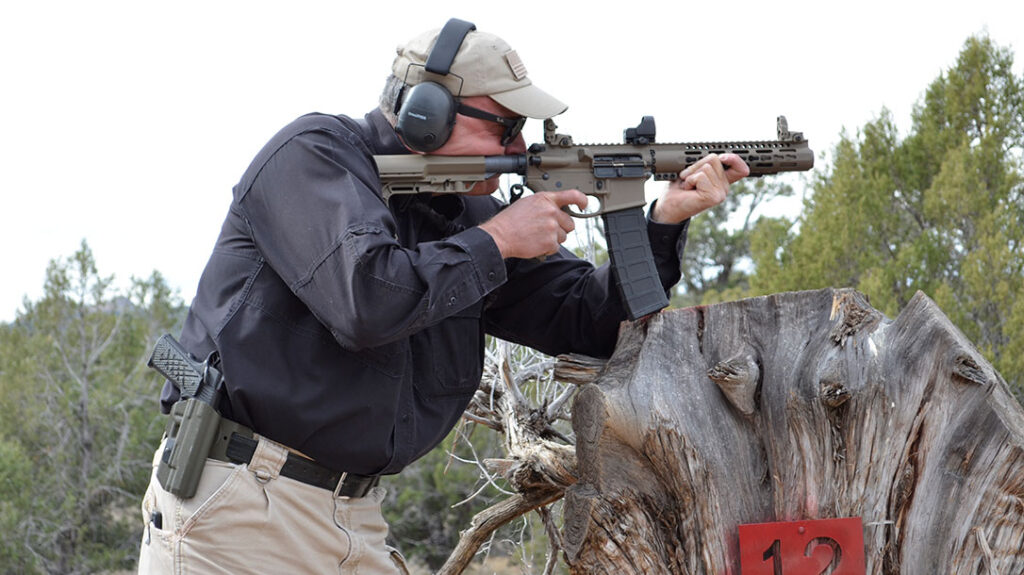
Of course, the reduced velocity also affects the projectile’s energy. Likewise, the shorter gun accounts for a whopping 47% less energy. In the end, it’s up to you to decide just how important the shorter length is to your needs.
| Ammo | Velocity 7.5” FPS | Energy 7.5” FPE | Velocity 16” FPS | Energy 16” FPE |
| Aguila 55-grain FMJ | 1921 | 450 | 2788 | 949 |
| Aguila 62-grain FMJ | 2072 | 591 | 2872 | 1135 |
| Black Hills 69-grain OTM Match | 2125 | 692 | 2812 | 1211 |
| Federal American Eagle 55-grain FMJ BT | 2091 | 534 | 2899 | 1026 |
| Hornady 73-grain ELD Match | 2039 | 674 | 2694 | 1176 |
| Sig Sauer 77-grain OTM Match | 1813 | 562 | 2431 | 1010 |
| Average Bullet Weight 65-grains | ||||
| Average Velocity for 7.5” Barrel | 2010 | |||
| Average Energy for 7.5” Barrel | 583 | |||
| Average Velocity for 16” Barrel | 2749 | |||
| Average Energy for 16” barrel | 1084 |
Seeing the Light
For target identification, I added an Inforce weapon-mounted light (WML) on the handguard at the 9 o’clock position. It also acts as a hand-stop to keep me from burning my hand on the suppressor.
The light, which provides 400 lumens, can easily be thumb-activated by my support hand. It can be used in the constant “on” mode or activated for momentary light. In addition, it also has a strobe function. It is a sleek, convenient, sensible addition to my home defense gun.
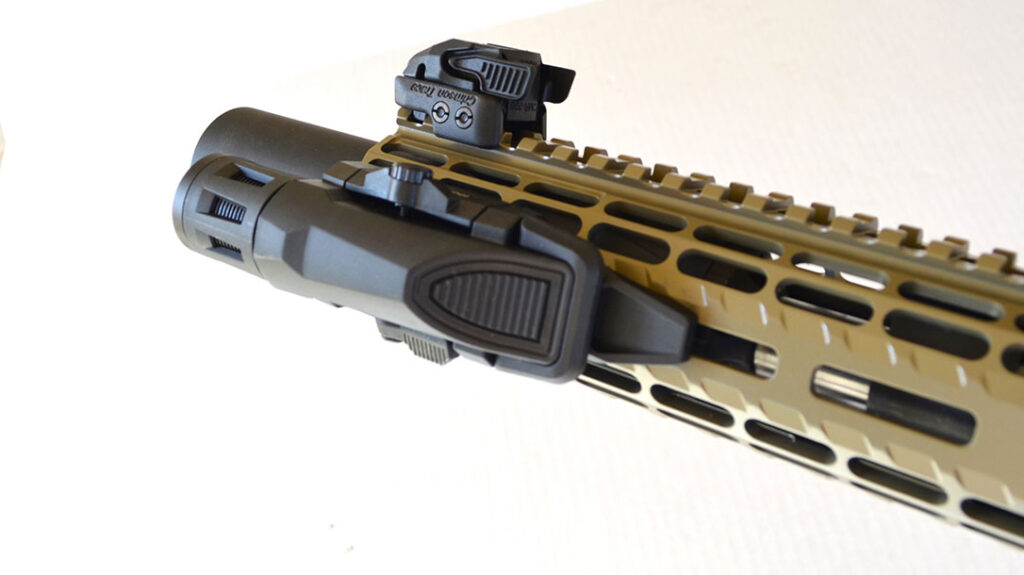
After sighting the house gun in, I decided to add a laser sight to the top rail. I attached Crimson Trace’s CMR-206 Rail Master® Universal Green Laser Sight to the handguard’s top rail. It boasts a very bright green laser and a 2-hour run time from a single 1/3 Lithium battery. Likewise, it also features a 5-minute auto-shut-off to preserve battery life.
Attaching the sight and co-witnessing it to the RMR’s red dot took just a few minutes. This provides me with a means of accurate fire if I’m unable to take a conventional sight picture.
Hush Little SBR
Buying a suppressor is easier than you think and Silencer Central provides all the support needed for a hassle-free purchase. At some point in the future, I see adding a dedicated .22 rimfire can and a 9mm suppressor to my collection.
I couldn’t be more pleased with my Banish .223. If I ever must fire a shot inside my home, I’m confident that hearing loss won’t be among my concerns!
For more information, please visit AeroPrecisionUSA.com, DuracoatFirearmFinishes.com, RiseArmament.com, Speed-Tac.com, Trijicon.com, InforceLights.com, CrimsonTrace.com, and SilencerCentral.com.
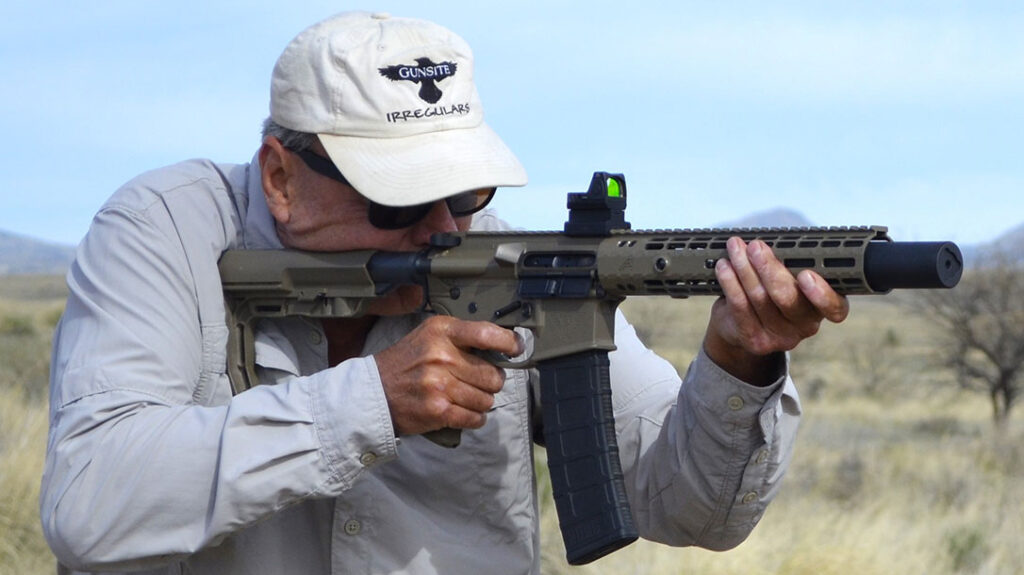
Silencer Central Banish 223 Specs
| Length | 7 inches |
| Tube Outer Diameter | 1-1/2 inches |
| Number Of Baffles | 7 |
| Weight | 11.4 ounces |
| Material | Titanium |
| Thread Pitch | 1/2×28 |
| Model | Banish |
| Self-Service | Yes |
| Caliber | .223/5.56 |
| Caliber Range | Rifles .224 And Smaller |
| Color | Black |
| Finish | Gun Kote |
| Mount Style | Conventional 1/2×28 (Class A) 0.625 inches In Length |
| Full-Auto Rated | Limited Full-Auto Rated |
| Sound Reduction | 34 DB |
| Price | $849 (Does Not Include $200 Tax Stamp) |
| Lifetime Warranty | Yes |
Didn’t find what you were looking for?


